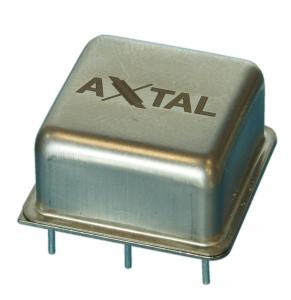Q-Tech's New AXTAL OCXOs Provide Combination of Ultra-Low Noise & Radiation Hardness Required for New Space Applications
Ultra-low noise performance; radiation hardness up to 50kRad TID; SEL immunity and SET insensitivity critical for LEO applications; OCXO ppb stability.
Designed by the company’s German affiliate, AXTAL, the AXIOM75Sx Series features both ultra-low phase noise (close-in and noise floor) and the radiation hardness required for high-performance low-earth orbit (LEO) satellite timing and frequency generation applications. Available for the frequencies of 10MHz (AXIOM75SL) and
50-400MHz(AXIOM75SH), these devices deliver low phase noise and noise floor down to -180dBc/Hz. Testing and screening to specific customer requirements is offered and swept crystal versions are available.
Key features of the AXIOM75Sx Series are radiation tolerance to 50 kRad(Si) TID, single event latch-up (SEL) immunity (by design), single-event transient (SET) insensitivity, exceptional frequency stability, over temperature (< ±50 ppb) and phase noise floor of -180dBc/Hz (at ≥100 kHz offset). The wide available frequency range from 10-400 MHz covers many potential applications. The OCXOs are packaged in hermetically sealed enclosures.
“Today’s low-earth orbit applications require lower cost, commercial off-the-shelf (COTS) products that offer proven state-of-the-art performance and radiation hardness,” said Henry Halang, AXTAL’s Managing Director. “The AXTAL New Space AXIOM75Sx Series provides industry-leading phase noise and radiation tolerance in a high-stability OCXO package.”
Scott Sentz
Q-Tech Corporation
+1 310-836-7900 ext. 110
email us here
Visit us on social media:
LinkedIn
Legal Disclaimer:
EIN Presswire provides this news content "as is" without warranty of any kind. We do not accept any responsibility or liability for the accuracy, content, images, videos, licenses, completeness, legality, or reliability of the information contained in this article. If you have any complaints or copyright issues related to this article, kindly contact the author above.

